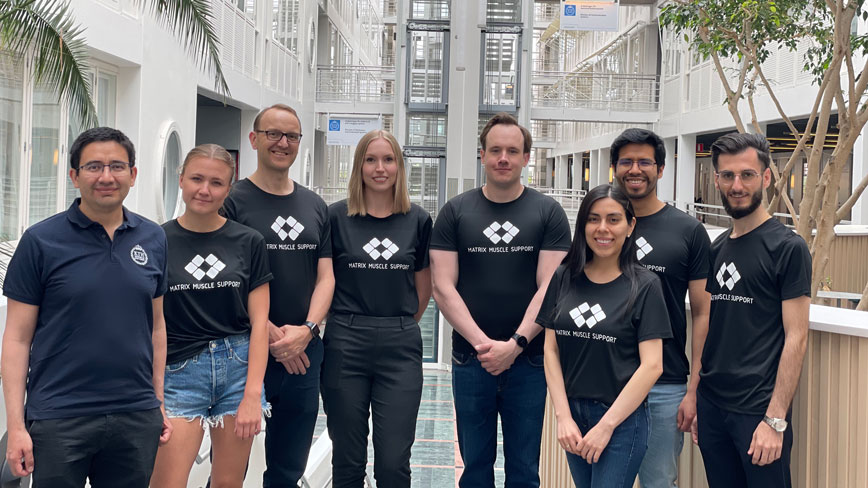Funding boost on blood clot prevention

Vinnova grants 4 MSEK for the development of next-generation Venous Thromboembolism prevention.
Researchers at the KTH Royal Institute of Technology, with industrial partners, have been granted a 4 million SEK project to create a wearable healthcare device to help stop blood clots. This wearable device will help to improve blood circulation in people suffering from immobilization.
Specifically, researchers at the Division of Electronics and Embedded Systems and the industrial partners Muscle Matrix Support AB and Roder (Roderinno AB) will develop a miniaturised venous thromboembolism (VTE) prevention system based on neuromuscular electric stimulation (NMES) and advanced microelectronics.
People with some degree of immobilisation or inactivity have an increased risk of developing blood clots in their veins, which can be life-threatening if efficient prevention is not in place. Inactivity is currently considered the new smoking, and according to the World Health Organization, physical inactivity is estimated to cause 500 million cases of non-communicable diseases by 2030, which will incur an average healthcare cost of $27 billion per year.
The 2-year project is under the Strategic Innovation Program “Smarter Electronic Systems” (Strategiska innovationsprogrammet Smartare Elektroniksystem en gemensam satsning av Vinnova, Formas och Energimyndigheten). This call received 34 project applications, competing for a total available funding of 28 million SEK.
The project obtained high scores on Vinnova's requirements for potential, feasibility, and constellation.
“This project offers the fantastic opportunity of merging Roder, a leading company in innovation and sustainable ventures, Muscle Matrix Support AB, a Karolinska spin-off company with breakthrough patented medical instrumentation technology, and a leading research group in Microelectronics at KTH,” says Assoc. Prof.
Saul Rodriguez
, Principal Investigator at KTH in this project.
“We believe that the synergy between these actors has the potential to provide clinically important results for society by dramatically improving how VTE prevention is done.”
Text: Sturle Hauge Simonsen
Related news

Funding boost on blood clot prevention
Vinnova grants 4 MSEK for the development of next-generation Venous Thromboembolism prevention.
Read the article
Fast communication with spintronics is possible, models show
One step closer to better and faster communication in 5G and 6G has been taken. Ericsson and KTH will now evaluate the technology for two years, and the hope is to get closer to a prototype that can b...
Read the article
From implantable medical devices to spintronics-based systems
The use of new implantable medical sensors in the body requires new ways of supplying them with energy. Ana Rusu’s group develops smart and energy-efficient integrated circuits and systems towards min...
Read the article